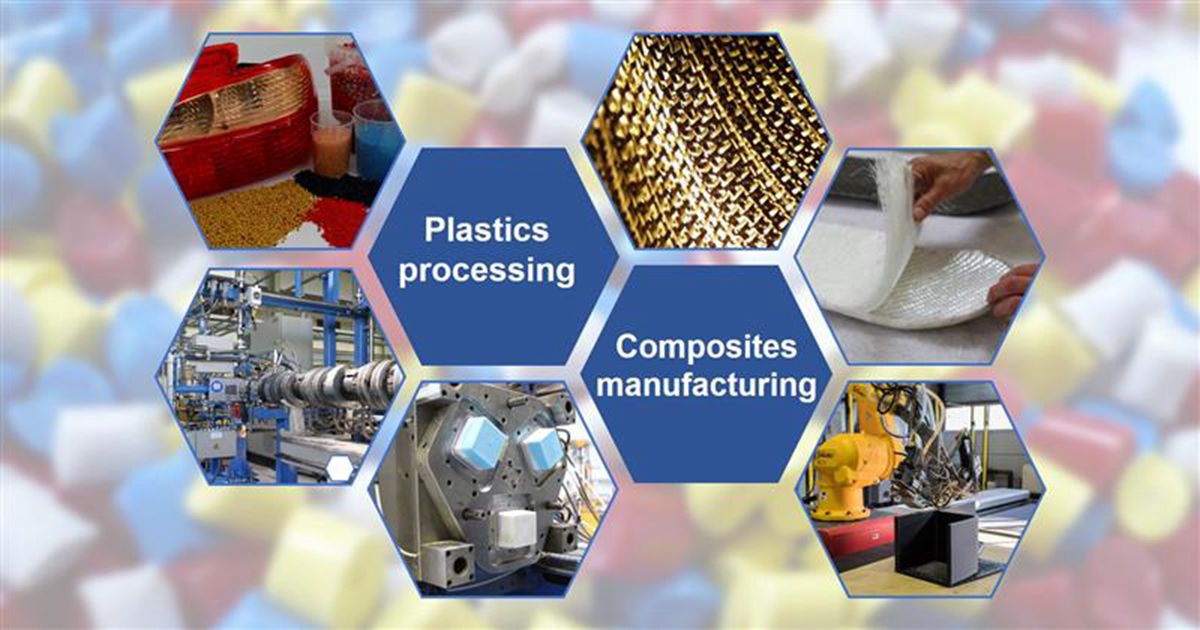Topic Editors


Advanced Composites Manufacturing and Plastics Processing, 2nd Volume

Topic Information
Dear Colleagues,
Environmental and energy concerns and digitalization are currently having profound effects in reshaping the plastics and composites industry. Manufacturing processes and systems evolve accordingly in order to cost-effectively produce high-performance, high-quality, lightweight, and multifunctional parts with a reduced carbon footprint. All composites manufacturing and polymer processing technologies are concerned with this trend: liquid composite molding (e.g., resin transfer molding and resin infusion/vacuum infusion), automated lay-up (e.g., automated fiber placement and automated tape laying), filament winding, prepreg technology, pultrusion, autoclave, compression molding, film stacking, additive manufacturing/3D printing, injection molding, over-molding/back-molding, extrusion, blow molding, thermoforming, rotational molding, foaming, coating, preforming of textile reinforcement, joining/welding, and mold technologies (i.e., mold making and design).
Following the previous Topic (Advanced Composites Manufacturing and Plastics Processing), this new Topic welcomes original research articles, state-of-the-art reviews, and short communications on the latest advances in composites manufacturing and plastics processing. Suggested contributions may address new process developments, modeling/simulation, monitoring/control, and performance or application issues, with either experimental or numerical approaches. All types of polymers (thermoplastics, thermosets, and elastomers) and fibers/fillers (glass, carbon, ceramic, mineral, and vegetal) are eligible topics of focus, whether they come from recycled, bio-based, or fossil feedstocks. Multidisciplinarity is also encouraged to cover emerging topics such as smart manufacturing, artificial intelligence applied to manufacturing, data-driven simulations, and digital twins.
Prof. Dr. Patricia Krawczak
Prof. Dr. Ludwig Cardon
Prof. Dr. Frederik Desplentere
Topic Editors
Keywords
- polymer processing
- composites manufacturing
- joining and welding
- additive manufacturing
- recycling
- process optimization, modelling, and simulation
- manufacturing technology
- smart manufacturing
- digitalization and Industry 4.0
- thermoplastic polymers and elastomers, thermosetting resins, and plastics
- composite materials
- nanocomposites
- fibers, fillers, and textile reinforcement
Participating Journals
| Journal Name | Impact Factor | CiteScore | Launched Year | First Decision (median) | APC | |
|---|---|---|---|---|---|---|

Fibers
|
3.9 | 7.4 | 2013 | 23.3 Days | CHF 2000 | Submit |

Journal of Composites Science
|
3.7 | 5.8 | 2017 | 16.2 Days | CHF 1800 | Submit |

Journal of Manufacturing and Materials Processing
|
3.3 | 5.2 | 2017 | 16.2 Days | CHF 1800 | Submit |

Materials
|
3.2 | 6.4 | 2008 | 15.2 Days | CHF 2600 | Submit |

Polymers
|
4.9 | 9.7 | 2009 | 14 Days | CHF 2700 | Submit |

Recycling
|
4.6 | 8.9 | 2016 | 20.9 Days | CHF 1800 | Submit |

Preprints.org is a multidisciplinary platform offering a preprint service designed to facilitate the early sharing of your research. It supports and empowers your research journey from the very beginning.
MDPI Topics is collaborating with Preprints.org and has established a direct connection between MDPI journals and the platform. Authors are encouraged to take advantage of this opportunity by posting their preprints at Preprints.org prior to publication:
- Share your research immediately: disseminate your ideas prior to publication and establish priority for your work.
- Safeguard your intellectual contribution: Protect your ideas with a time-stamped preprint that serves as proof of your research timeline.
- Boost visibility and impact: Increase the reach and influence of your research by making it accessible to a global audience.
- Gain early feedback: Receive valuable input and insights from peers before submitting to a journal.
- Ensure broad indexing: Web of Science (Preprint Citation Index), Google Scholar, Crossref, SHARE, PrePubMed, Scilit and Europe PMC.


